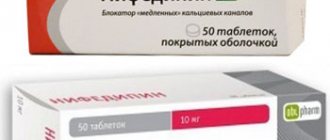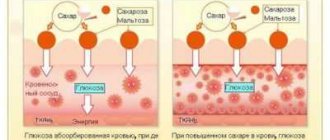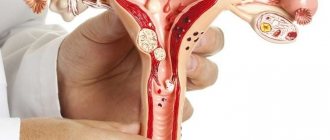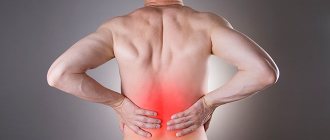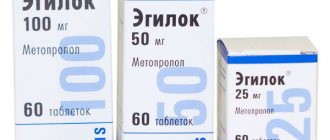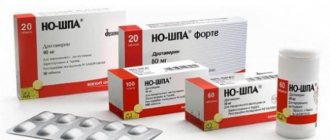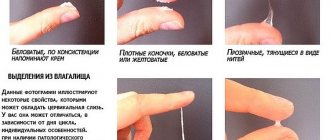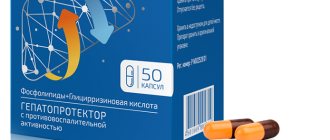A woman's nervous state before menstruation has become an object of ridicule from men. Premenstrual syndrome (PMS) “spoils” the lives of both, often causing quarrels in couples and quarrels in the family. Therefore, men should also know what PMS is in girls.
Women who have experienced all the “delights” of PMS know for sure that this is not a series of whims, but a truly complex condition. However, only a few of them know how to cope with the manifestations of hormonal changes in the body. Modern medicine provides such an opportunity: following certain rules and using safe medications will help you survive the premenstrual period without shock and depression.
Interesting facts about PMS
- Crime chronicle. PMS is not only frayed nerves and broken plates. Most road accidents, crimes, and thefts committed by women occurred between the 21st and 28th days of the menstrual cycle.
- Shopping therapy. According to research, a few days before their period, women are most susceptible to the temptation to buy as much as possible.
- Women engaged in mental work and residents of large cities are more susceptible to symptoms of PMS.
- The term PMS was first used by Robert Frank, an obstetrician-gynecologist from England.
What is PMS in girls and women
The abbreviation in the title of the article stands for premenstrual syndrome. Many people, on the eve of their critical days, feel anxious, are subject to sudden mood swings, cannot relax and become irritated over trifles. In addition to emotional imbalance, in the last days of the menstrual cycle there is a deterioration in physical condition, and the activity of internal organs is inhibited.
Premenstrual tension should not be classified as a disease. It is temporary and is caused by the natural process of monthly cleansing of the uterus from the upper layer.
Why does premenstrual syndrome occur?
Numerous studies have not been able to identify the exact causes of premenstrual syndrome. There are many theories of its occurrence: “water intoxication” (impaired water-salt metabolism), allergic nature (increased sensitivity to endogenous progesterone), psychosomatic, hormonal, etc.
But the most complete is the hormonal theory, which explains the symptoms of PMS by fluctuations in the level of sex hormones in the 2nd phase of the menstrual cycle. For the normal, harmonious functioning of a woman’s body, the balance of sex hormones is very important:
- estrogens - they improve physical and mental well-being, increase tone, creativity, speed of information absorption, and learning abilities
- progesterone - has a sedative effect, which can lead to depressive symptoms in phase 2 of the cycle
- androgens - affect libido, increase energy, performance
During the second phase of the menstrual cycle, a woman's hormonal background changes. According to this theory, the cause of PMS lies in the “inadequate” reaction of the body, including the parts of the brain responsible for behavior and emotions, to cyclical changes in hormonal levels, which is often inherited.
Since the days before menstruation are endocrine unstable, many women experience psycho-vegetative and somatic disorders. In this case, the decisive role is played not so much by the level of hormones (which may be normal), but by fluctuations in the content of sex hormones during the menstrual cycle and how the limbic parts of the brain, responsible for behavior and emotions, react to these changes:
- an increase in estrogen and first an increase and then a decrease in progesterone - hence fluid retention, swelling, engorgement and tenderness of the mammary glands, cardiovascular disorders, irritability, aggression, tearfulness
- hypersecretion of prolactin - also leads to fluid and sodium retention in the body
- excess prostaglandins - vegetative-vascular disorders, digestive disorders, migraine-like headaches
The most likely factors influencing the development of the syndrome, about which medical opinions do not differ:
- A decrease in the level of serotonin, the so-called “hormone of joy,” may be the cause of the development of mental signs of premenstrual syndrome, since a decrease in its level causes sadness, tearfulness, melancholy and depression.
- Vitamin B6 deficiency - a lack of this vitamin is indicated by symptoms such as fatigue, fluid retention in the body, mood swings, and breast hypersensitivity.
- Lack of magnesium - magnesium deficiency can cause tachycardia, dizziness, headaches, and cravings for chocolate.
- Smoking. Women who smoke are twice as likely to experience premenstrual syndrome.
- Overweight. Women with a body mass index of over 30 are three times more likely to suffer from PMS symptoms.
- Genetic factor - it is possible that the characteristics of premenstrual syndrome are inherited.
- Abortion (consequences), complicated childbirth, stress, surgical interventions, infections, gynecological pathologies.
Causes
In the 30s of the 20th century, gynecologist Robert Frank first defined the disease, which manifests itself with varying strength in all women before the onset of menstruation. He called it “premenstrual tension.”
At the same time, the doctor considered the imbalance of hormones in the body before menstruation to be the main cause of the ailments. Medical scientists are still trying to clarify the reasons for such changes in the body. Indeed, during this period, balanced women become truly hysterical, conflictual and emotional individuals.
Several theories of the development of PMS have been identified, but all of them cannot fully describe the causes of health problems before the onset of menstruation:
Hormonal disbalance
On specific days of the cycle - usually in the last 2 weeks - women experience a disruption in the balance of hormones between estrogen and progesterone. This causes psycho-emotional disorders, deviations in the functioning of the vegetative-vascular system, and problems with metabolic and endocrine processes.
An increase in the concentration of the hormone estrogen provokes a retention of sodium and water in the cells - in connection with this, swelling, chest pain, abnormalities in the functioning of the heart and blood vessels, as well as excretory organs, appear, and stomach pain.
Nervousness, tearfulness and fatigue are triggered precisely by hormonal imbalances.
Water intoxication
In accordance with this theory, the development of physiological and psychological abnormalities is associated with disturbances in water-salt balance. Delayed fluid excretion, swelling, acute perception of certain odors, itching of the skin are the consequences of neuroendocrine disorders.
The accumulation of water in the body before menstruation often causes excess weight gain. A woman’s weight usually increases by 3–5 kg, but from the day her period begins, these kilograms go away on their own.
Disorders of the central nervous system
This theory of the causes of PMS is considered the most relevant. It turns out that a disruption in the emotional and physical state is triggered by functional disorders of the central nervous system.
The older a woman is, the more pronounced the symptoms of PMS appear, and the tendency to depression increases. Young girls become aggressive and irritable, and they are characterized by frequent changes in mood and behavior.
Scientists have carefully studied the risk factors associated with PMS. The most common of them that affect the intensity of PMS manifestations include:
- Caucasian race;
- mental work and living in big cities;
- frequent pregnancies;
- absence of pregnancy, abortions and miscarriages;
- pathologies of the genitourinary system;
- gynecological operations;
- long-term thrush of the genital organs;
- prolonged depression and constant stress;
- chronic fatigue;
- infections;
- side effects of contraceptives;
- malnutrition;
- physical inactivity.
Main symptoms and manifestations of premenstrual syndrome
Groups of symptoms for PMS:
- Neuropsychic disorders: aggression, depression, irritability, tearfulness.
- Vegetovascular disorders: changes in blood pressure, headache, vomiting, nausea, dizziness, tachycardia, pain in the heart.
- Metabolic and endocrine disorders: edema, increased body temperature, chills, engorgement of the mammary glands, itching, flatulence, shortness of breath, thirst, memory loss, blurred vision.
PMS in women can be divided into several forms, but their symptoms usually do not appear in isolation, but are combined. In the presence of psychovegetative manifestations, especially depression, women’s pain threshold decreases and they perceive pain more acutely.
Neuropsychiatric | Crisis form | Atypical manifestations of PMS |
Disturbances in the nervous and emotional spheres:
|
Most women have diseases of the cardiovascular system, kidneys, and gastrointestinal tract. |
|
Edema form | Cephalgic form | |
Negative diuresis with fluid retention is noted. | The leading ones are mainly neurological and vegetative-vascular manifestations:
The family history of women with this form is burdened with hypertension, cardiovascular diseases, and gastrointestinal diseases. |
PMS occurs differently in every woman, and symptoms vary significantly. According to the results of some studies, women with PMS have the following frequency of manifestation of one or another sign of PMS:
| Symptom | frequency % | Hormonal theory of PMS |
| irritability | 94 | |
| breast tenderness | 87 | |
| bloating | 75 | |
| tearfulness | 69 | |
| 56 | |
| 50 | |
| 44 | |
| 37 | |
| 19 | |
| vomit | 12 | |
| constipation | 6 | |
| pain in the spine | 3 |
Premenstrual syndrome can aggravate other diseases:
- Anemia (see iron supplements for anemia)
- Epilepsy (symptoms, treatment)
- Migraine (see triptans for migraine)
- Thyroid diseases
- Chronic fatigue syndrome
- Bronchial asthma
- Irritable bowel syndrome
- Allergic reactions
- Inflammatory diseases of the female genital organs
Start and duration
For most women, PMS worsens 12–48 hours before their period. But the symptom complex can appear any day after ovulation. According to the observations of gynecologists, it most often occurs two days and 1–1.5 weeks before menstruation. The state of health improves dramatically with the onset of bleeding. It is possible to determine exactly how long premenstrual cycle syndrome lasts only after several months of monitoring the patient.
Signs disappear completely during menstruation. Often, women know how many days before the start of menstruation their PMS begins, which allows them to start treatment in a timely manner.
Diagnostics: what can masquerade as symptoms of PMS?
Since dates and deadlines are easily forgotten, to make your task easier, you should keep a calendar or diary where you write down the start and end dates of menstruation, ovulation (basal temperature), weight, and symptoms that bother you. Keeping such a diary for 2-3 cycles will greatly simplify diagnosis and allow you to track the frequency of PMS symptoms.
| To make a diagnosis, 4 or more of the following signs must be present: | And at least 1 of the following: |
|
|
The severity of premenstrual syndrome is determined by the number, duration and intensity of symptoms:
- Mild form: 3-4 symptoms or 1-2 if they are significantly pronounced
- Severe form: 5-12 symptoms or 2-5, but very pronounced, and regardless of the duration and their number, if they lead to disability (usually the neuropsychiatric form)
The main feature that distinguishes premenstrual syndrome from other diseases or conditions is cyclicality. That is, deterioration in well-being occurs several days before menstruation (from 2 to 10) and completely disappears with their arrival. However, unlike psycho-vegetative ones, physical discomfort in the first days of the next cycle can intensify and smoothly transform into disorders such as painful periods or menstrual migraine.
- If a woman feels relatively well in phase 1 of the cycle, then this is premenstrual syndrome, and not a chronic disease - neurosis, depression, fibrocystic mastopathy
- If pain appears only immediately before and during menstruation, especially when combined with spotting in the middle of the cycle, it is most likely not PMS, but other gynecological diseases - endometriosis, chronic endometritis, dysmenorrhea (painful menstruation) and others.
To establish the form of the syndrome, studies of hormones are carried out: prolactin, estradiol and progesterone. The doctor may also prescribe additional diagnostic methods, depending on the prevailing complaints:
- For severe headaches, dizziness, tinnitus, decreased vision and fainting, a computed tomography or MRI scan is prescribed to rule out organic brain diseases.
- If there is an abundance of neuropsychiatric diseases, an EEG is indicated to exclude epileptic syndrome.
- In case of severe edema, changes in the daily amount of urine (diuresis), tests are performed to diagnose the kidneys (see causes of swelling of the legs).
- In case of severe and painful engorgement of the mammary glands, it is necessary to perform an ultrasound of the mammary glands and mammography to exclude organic pathology.
Not only a gynecologist examines women suffering from PMS, but also involves psychiatrists, neurologists, endocrinologists, nephrologists, cardiologists and therapists.
Diagnostics
There is no definitive test that can help diagnose PMS. But one of the main criteria for diagnosis is the onset of symptoms in the second half of the cycle or the luteal phase. Symptoms disappear with the onset of critical days11.
A blood test is not necessary to diagnose PMS. But it can help rule out other diseases that cause or worsen the condition, such as anemia. Thyroid function tests can diagnose hypothyroidism or hyperthyroidism. They both have similar signs and symptoms.
PMS does not occur in pregnant women, during menopause or before puberty.
There is a rarer phenomenon that is a severe form of PMS - premenstrual dysphoric disorder (PMD). Common symptoms include anger, irritability, depression and internal tension that is severe enough to interfere with normal life.
This disorder is very pronounced, the woman practically isolates herself from others, cannot live her usual life, and is visited by depressive thoughts12.
And while moderate PMS affects up to 40% of women with regular menstrual cycles, PDR affects only 3–8% of women. This condition can affect women from all social, economic and cultural backgrounds13.
Premenstrual syndrome or pregnancy?
Some symptoms of PMS are similar to those of pregnancy (see first signs of pregnancy before delay). After conception, the content of the hormone progesterone increases in a woman’s body, which also occurs during PMS, so the following symptoms are identical:
- fast fatiguability
- breast swelling and tenderness
- nausea, vomiting
- irritability, mood swings
- lower back pain
How to distinguish pregnancy from PMS? Comparison of the most common symptoms of premenstrual syndrome and pregnancy:
| Symptoms | Pregnancy | Premenstrual syndrome |
| accompanies the entire pregnancy | with the onset of menstruation the pain goes away |
| the attitude towards food changes, you want inedible, salty, beer, things that a woman usually doesn’t like, the sense of smell is greatly heightened, ordinary smells can be very irritating | may crave sweet and salty foods, sensitivity to smells |
| only in later stages | May have lower back pain |
| starts 4-5 weeks after conception | can appear either immediately after ovulation or 2-5 days before menstruation |
| mild, short-lived pain | individually in each case |
| frequent mood swings, tearfulness | irritability |
| Maybe | No |
| from 4-5 weeks after conception | possible nausea, vomiting |
The signs of both conditions are very similar, so it is not easy to understand what exactly is happening in a woman’s body and distinguish pregnancy from PMS:
- The easiest way to find out what causes poor health is to wait until your period starts.
- If the calendar is already late, you should take a pregnancy test. A pharmacy test will give reliable results only if menstruation is delayed. It is sensitive to the pregnancy hormone (hCG) excreted in the urine. If you don’t have the patience and nerves to wait, you can take a blood test for hCG. It shows almost one hundred percent results on the tenth day after conception.
- The best option to find out what is bothering you - PMS syndrome or pregnancy - is to visit a gynecologist. The doctor will assess the condition of the uterus and, if pregnancy is suspected, prescribe an ultrasound.
When to see a doctor
If the manifestations of premenstrual syndrome significantly reduce the quality of life, affect the ability to work and are of a pronounced nature, treatment cannot be avoided. After a thorough examination, the doctor will prescribe drug therapy and give the necessary recommendations to alleviate the syndrome.
Traditional medicine for PMS
There are a number of recommendations from the “traditional medicine” series that will help get rid of the manifestations of premenstrual syndrome or, at least, reduce their intensity. Of course, you should first consult with a gynecologist and get approval for such a solution to the problem.
The most popular, effective and safe folk remedies for alleviating the manifestations of premenstrual syndrome are:
- Tincture of calendula. It should be taken 10 drops three times a day before each meal.
- Dandelion roots. A decoction is prepared from them according to the classic recipe (a teaspoon of raw material per 200 ml of boiling water, infuse) and take half a glass 2 times a day before meals. This decoction helps reduce swelling and get rid of chest pain.
- Herbal collection. You need to mix 2 parts of nettle, mantle, calendula and 1 part of lemon balm, rose petals and chamomile. Then an infusion is prepared in the proportion of 1 tablespoon of the collection per glass of boiling water; it must be infused for 3-5 hours. Take one cup (150 ml) of herbal decoction 2-3 times a day.
- A decoction of jasmine and yarrow. Mix 30 grams of white jasmine flowers and 40 grams of yarrow, pour a glass of boiling water, leave for 15 minutes. You need to take 100 ml of the decoction three times a day. This remedy will help get rid of pain in the lower abdomen if you start taking it a week before the expected start of your period.
Premenstrual syndrome is not a whim or a “whim” of a woman, but a rather serious health disorder. And you need to take PMS seriously - in some cases, ignoring the symptoms of the phenomenon in question can lead to problems in psycho-emotional terms. Just don’t try to alleviate your condition on your own - every woman with premenstrual syndrome should undergo an examination and receive competent recommendations from a specialist.
Tsygankova Yana Aleksandrovna, medical observer, therapist of the highest qualification category
12, total, today
( 41 votes, average: 4.83 out of 5)
Asherman's syndrome: symptoms, treatment
Is it possible to take a bath during menstruation - what can and cannot be done during menstruation?
Related Posts
How can a doctor help?
In most cases, treatment is symptomatic. Depending on the form, course and symptoms of premenstrual syndrome, a woman needs:
- Psychotherapy - mood swings, irritability, depression, from which both the woman and her loved ones suffer, are corrected using stabilizing behavioral techniques, psycho-emotional relaxation, and sedatives.
- For headaches, lower back and abdominal pain, non-steroidal anti-inflammatory drugs are prescribed for temporary pain relief (Ibuprofen, Nimesulide, Ketanov, see tablets and injections for pain).
- Diuretics to remove excess fluid from the body during edema (see herbal diuretics).
- Hormonal therapy is prescribed for insufficiency of the second phase of the cycle, only after functional diagnostic tests, based on the results of identified changes. Progestins are used - Duphaston, Medroxyprogesterone acetate from 16 to 25 days of the cycle.
- Antidepressants and tranquilizers are prescribed for a variety of neuropsychiatric symptoms (insomnia, nervousness, aggressiveness, anxiety, panic attacks, depression): Amitriptyline, Rudotel, Tazepam, Sonapax, Sertraline, Zoloft, Prozac, etc. in phase 2 of the cycle after 2 days from the onset of symptoms.
- In crisis and cephalgic forms, it is possible to prescribe Parlodel in phase 2 of the cycle, or if prolactin is elevated, then in a continuous mode, it has a normalizing effect on the central nervous system.
- For cephalgic and edematous forms, antiprostaglandin drugs (Indomethacin, Naprosyn) are recommended in the second phase of the menstrual cycle.
- Since women often have elevated levels of histamine and serotonin during PMS, the doctor may prescribe 2nd generation antihistamines (see allergy pills) 2 days before the expected worsening of the condition at night before the 2nd day of menstruation.
- To improve blood circulation in the central nervous system, it is possible to use Grandaxin, Nootropil, Aminolon for 2-3 weeks.
- In case of crisis, cephalgic and neuropsychic forms, drugs that normalize neurotransmitter metabolism in the central nervous system are indicated - Peritol, Difenin, the doctor prescribes the drug for a period of 3-6 months.
- Homeopathic medicines Remens or Mastodinon.
What do you need to remember?
- Premenstrual syndrome is a deterioration in health during the luteal phase.
- The hormonal cause of PMS has been confirmed.
- More often a mixed form of the disorder is diagnosed.
- Treatment is carried out using complex methods.
- During PMS, girls have an enlarged belly, aggressive behavior, and decreased academic performance.
Literature
- Bobrova, C.B., Lyubarsky M.S., Ovsyannikova T.V. Premenstrual syndrome: new approaches to therapeutic tactics and effective prevention // Russian Bulletin of Obstetrician-Gynecologist-2006.-No. 6.- P.44 - 49.
- International statistical classification of diseases and related health problems. 10th revision (set of 4 books). - M., 2003. — T.1.- 4.2.- P. 42.
- Hormonal therapy of premenstrual syndrome / N.V. Aganezova [and others] // Bulletin of perinatology, obstetrics and gynecology: Scientific and practical works: Sat. - Krasnoyarsk, 2006. - No. 13. - P. 267 - 275.
- Premenstrual syndrome and addictive forms of behavior in women / L.I. Wasserman [et al.] // “Man, alcohol, smoking and food addictions” (somatic and narcopsychiatric aspects: Proceedings of the 2nd interdisciplinary congress with international participation). - St. Petersburg, 2008. - pp. 116-117.
- Ershova, AB The use of selective serotonin reuptake inhibitors for the treatment of premenstrual dysphoric disorder: dis. ...cand. honey. Sci. - M., 2009. - 208 S.
- Mezhevitinova, E.A., Prilepskaya V.N. Premenstrual syndrome // Gynecological endocrinology / Ed. V.N. Serova, V.N. Prilepskoy, T.V. Ovsyannikova. - M., 2004. - P. 208 - 235.
- Komarova, Yu.A. Premenstrual syndrome in women of transitional age: abstract. dis…. Ph.D. honey. Sci. - M., 1987. - 24 C
- Kuznetsova, M.N. Clinic, pathogenesis and treatment of premenstrual syndrome: dis. ... doc. honey. Sci. - M., 1971.-441 S.
- Guide to outpatient care in obstetrics and gynecology / Ed. V.I. Kulakova, V.N. Prilepskoy, V.E. Radzinsky. - M.: GEOTAR - Media, 2007. - P. 751 - 757.
- Slivankova, E.V. Clinical evaluation of the effectiveness of treatment of premenstrual syndrome with combined hormonal contraceptives: dis. ...cand. honey. Sci. - St. Petersburg, 2007 - 163 pp.
- Andersch, B. Progesterone treatment of premenstrual tension a double-blind study / B. Andersch, L. Hahn // J. Psychosom. Res. - 1985. - N 29. - P. 489-493.
- Ann, F. Magnesium Supplementation Alleviates Premenstrual Symptoms of Fluid Retention / F. Ann // J. of women's health. 1998. - Vol. 7, N 9. - P. 1157-1165.
- Bianchi-Demicheli, F. Premenstrual dysphoric disorder: diagnosis and therapeutic strategy. / F. Bianchi-Demicheli // Rev. Med.Suisse. 2006. - Vol. 8, N 2 (52). -P. 393-394, 397-399.
Varieties
Depending on the severity of symptoms, the disorder can occur in several forms:
- edematous – which is characterized by the appearance of edema of the lower extremities and face, as well as increased sweating;
- neuropsychic – changes in the emotional background are predominantly common;
- cephalgic, with intense headache;
- crisis – with a strong increase in blood pressure;
- atypical – characterized by fever and migraine;
- mixed - combining the characteristics of several forms.
According to the degree of progression, a cyclic disease can be:
- severe – in which more than ten symptoms are observed (five of them are usually very intense);
- mild – less than five signs of different groups are present, two of which are most pronounced.
In addition, there are several stages of manifestation of premenstrual illness:
- compensated - symptoms are absent or mildly expressed, do not develop over time and disappear with the onset of menstruation;
- subcompensated – the symptoms are so strong that they reduce performance. The older a woman gets, the stronger they will manifest themselves;
- decompensated - symptoms of high intensity and stop a few days after menstruation.
Any of these forms and stages can be easily treated with medications, but it takes a lot of time.
How to relieve the condition
If PMS in a girl or woman is painful and lasts a long time, it requires medical correction to alleviate the condition and normalize well-being.
In order to normalize emotions, sedatives with natural ingredients are prescribed - for example, Novopassit.
To restore hormonal balance, hormonal drugs are prescribed - Duphaston or Utrozhestan. Diclofenac is used to relieve pain.
Following all the doctor’s recommendations will reduce the feeling of discomfort and the intensity of pain that worries a woman during PMS. At the same time, your well-being is normalized.
Video about premenstrual syndrome
Medications for PMS
To suppress symptoms and treat PMS, medications are prescribed that can stabilize well-being and reduce the impact of the syndrome on the body. Medicines are prescribed by a gynecologist and taken under his supervision.
- Psychotropic drugs - with their help, the nervous system is restored and the symptoms of premenstrual syndrome, such as irritability, nervousness and others, are weakened.
- Hormonal medications are recommended for hormone deficiency in the body.
- Antidepressants – help improve overall well-being, normalize sleep, reduce anxiety, disorders, panic, and eliminate depression.
- Nonsteroidal medications are used for minor manifestations of PMS; they help eliminate headaches, dizziness and abdominal pain.
- Drugs that improve blood circulation.
Medicines are selected according to the characteristics of the female body, the symptoms and the degree of manifestation of signs of premenstrual syndrome are taken into account.
httpss://youtu.be/MXX2D3VB2bA
Premenstrual pain in the lower abdomen: statistics
Scientists conducted research and found the following: over the past decade, the number of women who experience premenstrual pain in the lower abdomen has almost doubled.
Today this number is about 40%. Most often this is due to an unhealthy lifestyle, environmental degradation, and an unbalanced diet. 10% of women experience particularly severe abdominal pain, which makes them unable to work. As a rule, this is associated with dysmenorrhea. In addition, before menstruation, the stomach, legs, lower back, insomnia may hurt, and irritability may also appear.
How to distinguish pregnancy from PMS
Many women are unable to distinguish between the signs of PMS and pregnancy. To know for sure, it is necessary to rely on the manifestations accompanying premenstrual syndrome or pregnancy.
Some symptoms are similar to each other, but they differ in duration and degree of manifestation.
- Quite quick fatigue after light physical activity.
- Enlargement of the mammary glands, their pain when touched - during PMS this manifestation does not last long, but during pregnancy it continues until childbirth.
- Feelings of nausea, vomiting - PMS is rarely expressed by these symptoms, but pregnancy is characterized by such manifestations throughout the first trimester.
- Irritability, frequent mood swings.
- Pain in the lumbar region.
During pregnancy, attitudes towards nutrition change; often women may want to try specific foods. This does not happen during menstruation; only cravings for sweet or salty foods are possible.
Causes of PMS
The main reason is a change in the concentration of hormones in the blood. What is characteristic is that the hormonal surge occurs very abruptly, and not gradually. Stress and fast city life contribute to the manifestation of symptoms; a sedentary lifestyle and intense intellectual work will also not contribute to good health. Both too frequent pregnancies and the inability to become pregnant allow a woman to be classified as a risk group, as do previous gynecological diseases and operations.
You should not abuse sweets and overeat in general, but it is better to get rid of bad habits - they disrupt the normal functioning of the body. Representatives of the fairer sex who take combined oral contraceptives should also be prepared for the fact that unpleasant disturbances in the functioning of the body may appear to varying degrees a couple of days before menstruation.
If you are unlucky enough to get a head injury or have neuroinfections and endocrine diseases, the risk of developing the syndrome increases significantly. It was noted that residents of small towns and villages, as well as representatives of all races except Caucasian, are almost not subject to sudden hormonal surges and have not encountered premenstrual syndrome.
Treatment of the syndrome
You should consult a doctor about PMS if it is severe; There are several signs that significantly reduce performance.
Since such symptoms are characteristic of many diseases of the hormonal, nervous, and reproductive systems, the diagnosis can be made based on repetition before menstruation. The specialist also needs to take into account the girl’s psychological state throughout the entire period in order to exclude pathology in this area.
Since there is an opinion in medicine that PMS is a hormonal imbalance, hormone-containing drugs are prescribed for treatment.
They often have side effects , so taking them on yourself without consulting a specialist is strictly prohibited.
If premenstrual syndrome is aggravated by a lack of certain vitamins , then the doctor prescribes them separately or in combination. The selection of vitamin and mineral preparations can significantly improve a woman’s condition.
Herbal infusions, herbal tablets or drops will help with mild PMS. They have diuretic properties, so they can relieve swelling.
They also have a calming effect, which normalizes a woman’s emotional state and sleep. Sedative medications can also have this effect.
Diuretics help against edema If you are concerned about spasms, headaches, discomfort in the chest and pelvis, the doctor may prescribe non-steroidal anti-inflammatory drugs.
Premenstrual pain in the lower abdomen: functional disorders
Before menstruation, the stomach may hurt due to anatomical features or diseases: - functional disorders in the endocrine system; - congenital underdevelopment or displacement of the uterus; - inflammatory process; - fibroids and cysts; - fibromatous nodes.
If you experience very intense pain in the lower abdomen, you need to be examined by a gynecologist. Minor nagging pain is considered normal and does not require treatment.
The reason why pain occurs in the lower abdomen before menstruation may be a previous abortion. Such pain may be felt for several cycles and then goes away.
Severe premenstrual pain in the lower abdomen, which is pathological, may appear due to an infectious disease of the genitourinary tract. Symptoms of infection can include not only painful periods, but also other unpleasant symptoms characteristic of a particular illness. To determine the exact cause of pain in the lower abdomen before menstruation, you should consult a doctor.
After the necessary diagnostics and a complete gynecological examination, the doctor will be able to give you the correct diagnosis. A disease detected in time greatly increases the chances of successfully getting rid of it.

